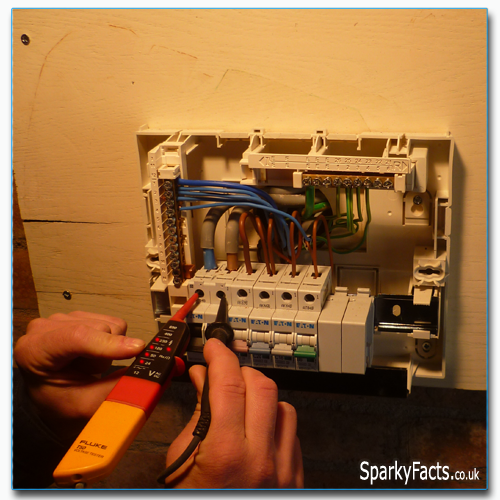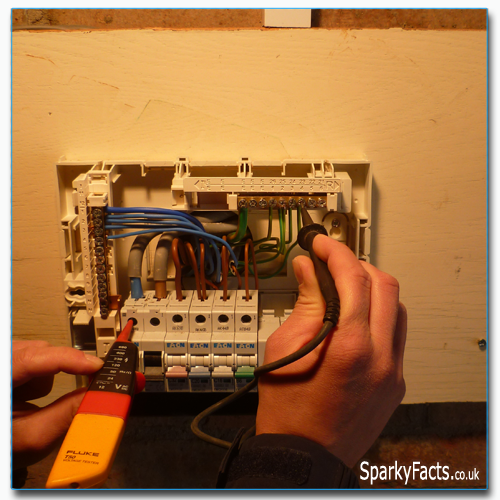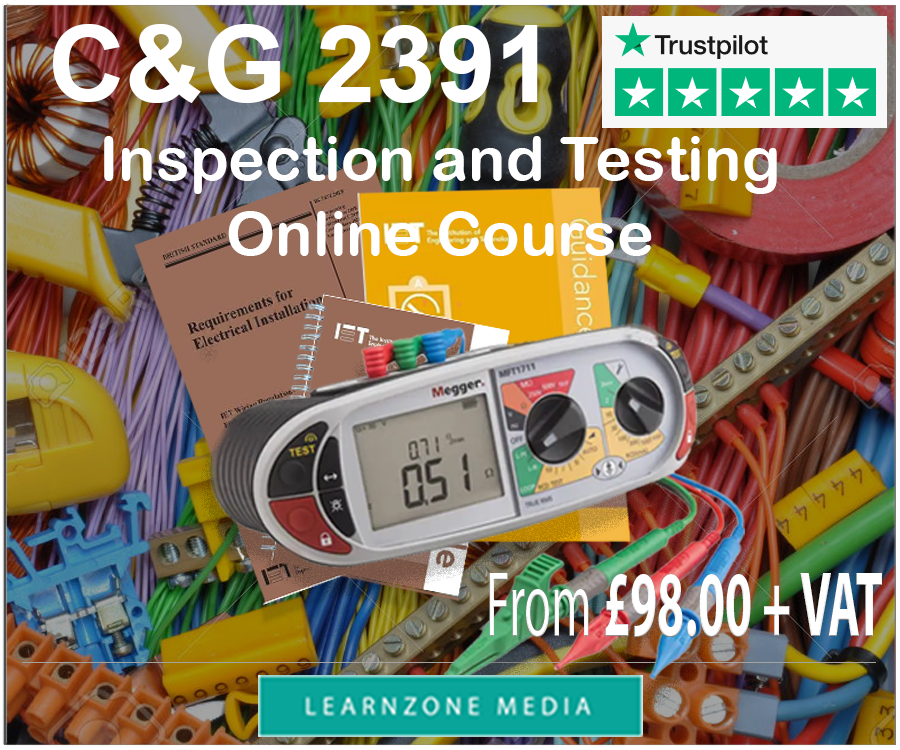Polarity Testing
What is electrical polarity?
Polarity in electrical terms refers to the Positive or Negative conductors within a d.c. circuit, or to the Line and Neutral conductor within an a.c. circuit.
What is a polarity test?
Since a.c. installations consist of a Live and a Neutral conductor, it is extremely important that these conductors are connected the right way around, within all electrical accessories such as wall sockets or plugs. To ensure this, polarity test is done at each relevant point.
The Polarity Test sequence:
![]() This is a live test so extra care is advised!
This is a live test so extra care is advised!
Step 1. Select a GS 38 approved voltage indicator and locate the Main Switch. Test between Line and Neutral terminals.

Step 2. Test between Line and Earth terminals.

Step 3. Test between Neutral and Earth terminals.

The test instrument should indicate full voltage (230V) between Line-Neutral and Line-Earth conductors. No voltage should be detected between Neutral-Earth.
The Inspection and Testing C&G 2391 practical exams
As part of the City and Guilds 2394 and 2395 practical assessment you will be required to verify the polarity of all circuits before connection to the supply. If you have performed the continuity tests and the ring circuit test then this task is already completed.
Going forward with the Inspection and Testing exam, you will be expected to energise the installation by removing the lock from the isolator and turning the supply ON for the first time.
After this step, live polarity tests are to be carried out. The sequence of tests are as described above.
After the correct polarity has been confirmed you will be allowed to turn the Main Switch ON.
Next we move on to Earth Fault Loop Impedance testing.
Important things to remember:
![]() During the testing remember to constantly inspect the installation for faults and signs of damages
During the testing remember to constantly inspect the installation for faults and signs of damages





